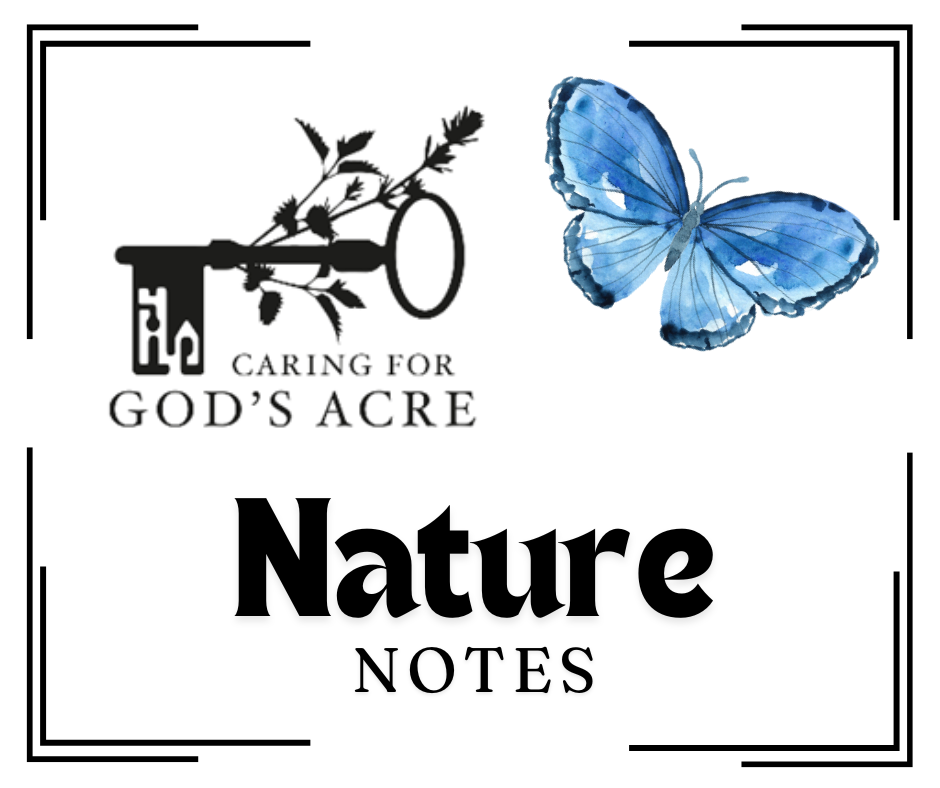The Churchyard Butterfly
Holly Blue can be thought of as a butterfly of churchyards as the larva (or caterpillar) has two food plants, holly and ivy, both of which are common in churchyards. Holly Blues have two broods per year, the first eggs hatch in May and the larvae feed mainly on flower buds and leaves of holly. They then pupate and emerge as butterflies in late summer ready to lay eggs. This second batch of eggs then hatches in August and the caterpillars feed on ivy. Look for holes where they have munched through holly and ivy flower buds! These caterpillars form chrysalises and overwinter like that, they then hatch out in April and May when the butterfly can first be seen, ready to lay those first eggs in May. The adults have different eating habits than the caterpillars, feeding on flower nectar, oozing plant and tree sap, aphid honeydew and juice from rotting fruit and carrion. They take the trace elements and minerals they need from bird and animal droppings.
Blue butterflies can be quite a difficult group to identify, but Holly Blues are much easier than other blues as they fly high around trees rather than staying close to the ground. They are a lovely pale silvery blue colour with a wingspan of about 3cm and can be seen between late March and mid-June and then again from late July through to September. The males are territorial, if you see a butterfly flying around the top of a holly or ivy-covered tree or wall, they may be driving off other males and attracting females to come and lay eggs, which they will fertilise.
A key conservation principle is that an animal has different needs at different times, all of which must be met if the population can survive and thrive. In the case of the Holly Blue, the adult needs somewhere to lay eggs, the caterpillars and then the adults both need food. A churchyard with holly and ivy growing, as well as wildflowers, insects such as aphids and plenty of other life providing both droppings and then carrion is ideal. Please look out for Holly Blues flying and also the holes made by hungry caterpillars!
Prue Dakin
info@cfga.org.uk
www.caringforgodsacre.org.uk

